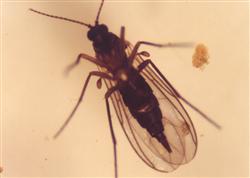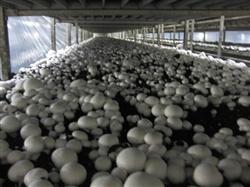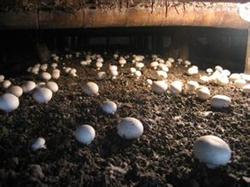A new method of dung-free cultivation of mushroom

With the popularization of mushroom planting technology, the method of cultivating mushroom has been continuously improved. Generally cultivated mushrooms use livestock manure as raw materials, but the disadvantage is bad smell. The following introduces the new technology of mushroom manure-free cultivation introduced in recent years for reference. 1. Mushroom dung-free cultivation formula (100m2) 1500 kg of straw, 15 kg of urea, 20 kg of ammonium bicarbonate, 50 kg of lime powder, 75 kg of peanut bran or 100kg of vegetable bran, calcium superphosphate? Hole 50 kg, gypsum powder 50 kg. The suitable ratio of carbon to pure nitrogen before fermentation was between 30: 31 and 1. At the end of fermentation, it was about 17:1. Note: there are slight differences among different strains. Therefore, the preparation of culture materials must pay attention to the ratio of carbon to pure nitrogen. In addition, in order to obtain the most ideal yield, it is best to use secondary fermentation technology or thermostat fermentation technology. Second, the method of stacking fermentation of culture materials. The method of composting fermentation: a new technology in recent years, which is made in groups in the early stage. Forage, nitrogen fertilizer, that is, urea, ammonium bicarbonate? Snow and lime powder as a group, other superphosphate, gypsum powder, bran cake fertilizer as a group, wait for the first time to turn the heap, that is, about 6 days to mix and compost. Specific method: the forage is pre-soaked 1-2 days in advance, and then build a pile, according to the proportion of one layer of wet grass, one layer of lime powder, one layer of wet grass and one layer of nitrogen fertilizer note: lime and chemical fertilizer can not be the same layer, so layer by layer, up to 1.5 meters high. Each layer of forage is 15 to 20 centimeters thick, 2 meters wide and 1.5 meters high, and the length depends on the quantity. Every 100 square meters, that is, 1500 to 2000 kilograms, the length of the forage stack is 810 meters. The top of the pile is in the shape of a tortoise and grows neatly around the pile; when the pile is built to a certain height, each layer should be watered appropriately, and it is appropriate to have a small amount of water around the pile the next day. Turn the pile: turn the pile every 5 days, 4 days, 3 days, generally turn the pile 3-4 times mixed pile, the fermentation period is about 18-23 days. Every time the pile is turned, the material should be fully shaken loose, and the positions of up and down, internal and external materials should be exchanged. Generally, the horizontal type and peeling type are used in the first two times, and the straight type and mixed type are used in the later stage. During the stacking period, if the weather is dry and the pile is dry, the pile can be turned over before pouring some water around the pile. The moisture of the material pile should be adjusted in the early stage, and nothing can be added after the second or third turn of the pile in the middle and later stage of the pile fermentation. During the last turn of the pile, use brick and stone to pad the bamboo and wood 15cm away from the ground, and then pile the material on it. Several coarse bamboo or sticks are inserted vertically, one every 0.8 meters or so, and pulled out the next day after the heap to form a breathable hole. In order to increase the air permeability of the material stack and remove the waste gas and odor, the quality of the culture material can be greatly improved. After inoculation, mushroom room preparation, soil restoration, mushroom production management and other work is basically the same as the conventional cultivation method, mainly mushroom room, materials to be thoroughly disinfected and ventilation, moisture control and heat preservation and other work. Material bag storage. Under the condition of 10 ℃-15 ℃, the mushroom can be kept white for a long time. Third, long-term treatment: soak mushrooms in 10/1000000-100Bijiu solution for 10 minutes, remove and drain, and put them into plastic bags. Under the temperature of 5 ℃-22 ℃, mushrooms can be kept fresh for a long time.
- Prev

Mushroom growth "acne" what's going on?
Most of the mushrooms cultivated in China are white Agaricus bisporus, which are rich in protein, a variety of amino acids, vitamins and other nutrients, known as "human health food", domestic and export sales are very large. Therefore, vigorously developing mushroom production plays an important role in developing rural sideline and increasing income. One.
- Next

Improved Technique of Mushroom Cover
Covering soil is an important link in the cultivation process of mushroom, and the characteristics of covering soil material directly affect the yield and yield of mushroom. Especially, the water holding capacity and water holding capacity of covering soil have great influence on yield. In recent years, the selection and improvement of covering materials have been carried out continuously in various places. From the simple use of vegetable soil, river soil to...
Related
- Fuxing push coffee new agricultural production and marketing class: lack of small-scale processing plants
- Jujube rice field leisure farm deep ploughing Yilan for five years to create a space for organic food and play
- Nongyu Farm-A trial of organic papaya for brave women with advanced technology
- Four points for attention in the prevention and control of diseases and insect pests of edible fungi
- How to add nutrient solution to Edible Fungi
- Is there any good way to control edible fungus mites?
- Open Inoculation Technology of Edible Fungi
- Is there any clever way to use fertilizer for edible fungus in winter?
- What agents are used to kill the pathogens of edible fungi in the mushroom shed?
- Rapid drying of Edible Fungi

